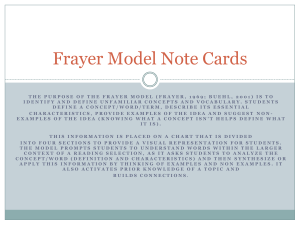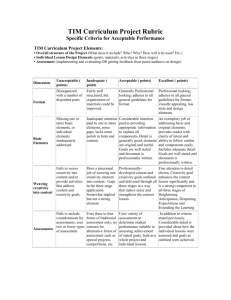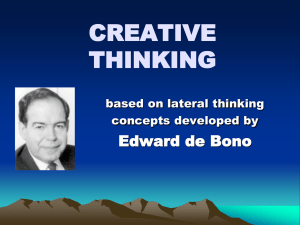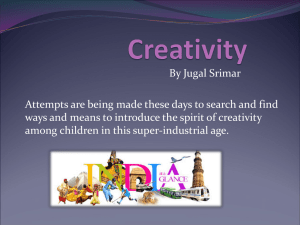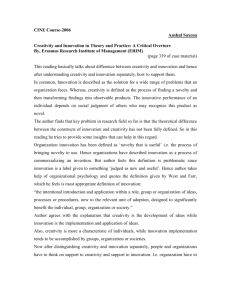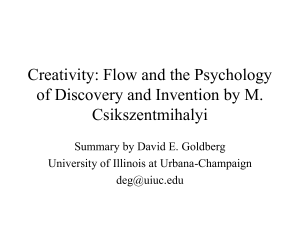Strategies for Developing Creativity and Critical
advertisement
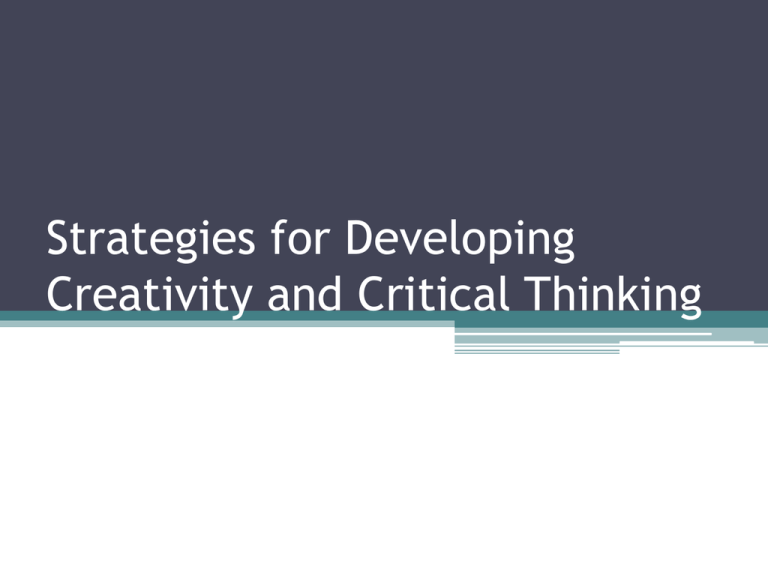
Strategies for Developing Creativity and Critical Thinking What is Creativity? • Is it a desire to explore and learn in different ways? • Creativity can be expressed in every discipline. • And the teacher desiring to provide a forum for creativity is constantly exploring new ways to teach and learn. • Here are a few strategies for incorporating creativity into your lessons. Creativity • Interactive Journaling • The Hats • Walking Tour • Graphic Organizers • The Frayer Method Interactive Journaling Ask students to bring a 8 by 11 inch spiral notebook with a least one hundred pages. Each page will be divided into two sections. The left side of the notebook page is reserved for student processing of the information recorded on the right side. Students may be asked to draw maps, think of a time when . . ., summarize in a sentence, create a graphic organizer . . . The Hats Collect an assortment of prompts for students to hold or wear, i.e., hats. Assuming the persona of the historical figure the student then gives a presentation. Walking Tour Form groups made up of the same number of students as there are charts posted around the room (4 charts means there should be 4 members in a group). Have group members number off and send one person to each chart. Students form new groups at the charts and then react to the information. The Frayer Method The Frayer Method is a visual organizer that helps learners separate critical attributes from interesting information about a concept. I’ve used this in teaching secondary math vocabulary. Be Creative in Providing for Critical Thinking Opportunities Critical Thinking • Corners • Ticket to Leave • Mosaic of Thought • Reciprocal Learning • Think Alouds Corners Pose a question that has multiple answers. Give students time to consider their own thinking about the topic, than have them move to a corner of the room that has been designated as the meeting place of all those holding the same opinion or view. In the corner meeting places students may discuss why they think or believe the way they do. Ticket to Leave Hand out index cards toward the end of an instructional period, have students write one higher order question that is related to the topic on the card. Explain that tomorrow’s warm-up prompt will be selected from the “tickets.” Students hand you the “tickets” as they leave class. Mosaic of Thought Students are taught three kinds of connections. 1. Text to self 2. Text to text 3. Text to world When students speak and write about these connections, we can evaluate the level of their reasoning and intervene as necessary. Reciprocal Learning This process is designed to help the student develop expertise with the thinking and process skills of predicting, clarifying, questioning, and summarizing. The teacher and a student take turns being the “teacher.” in this way the classroom teacher is able to model metacognition and the student “teacher” practices the process. Think Alouds A think aloud is a strategy in which the teacher assumes the role of a student “thinking aloud” about how to comprehend a passage or how to work through complex or confusing problems. Make a Plan • Choose one strategy and use it in your planning every month. • Get feedback from the students as to its effectiveness. • Celebrate your own creativeness. • Have fun. • Joy in learning is contagious. The End By Rose Gamblin


